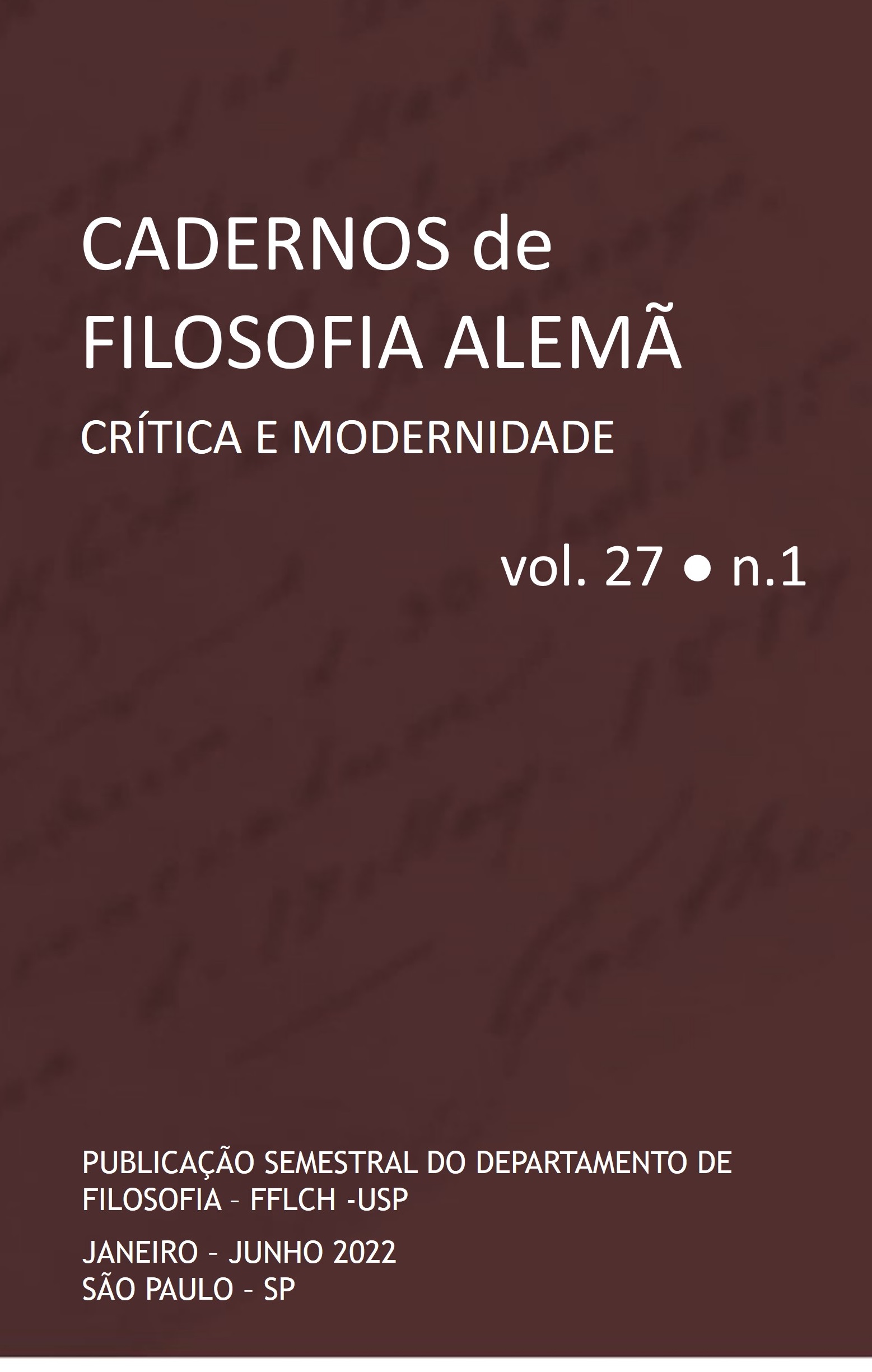The burning house and the lion's leap: Freud and the continuity-discontinuity dichotomy
DOI:
https://doi.org/10.11606/issn.2318-9800.v27i1p87-102Keywords:
Psychoanalysis, continuity, discontinuity, figure, limitAbstract
This article aims to comprehend the role of certain analogies, similes and metaphors within Freudian theory, especially in his 1937 essay, Die endliche und die unendliche Analyse. There, figures emerge that do not participate in real “reasonings by analogy”, but make discontinuous cuts in the text. The idea is to study them according to the continuity-discontinuity dichotomy, according to the category of what ends (endlich) and what ends not (unendlich). Images, in opposition to concepts, enter the text precisely in the demarcation of boundaries: between the analytical and the unanalysable, between the psychic and the biological, between analysis and life.
Downloads
References
Caropreso, F., & Monzani, L. R. (2012). Vivência de dor e pulsão de morte na teoria freudiana do aparelho psíquico e da teoria das neuroses. Revista mal-estar e subjetividade, 12 (3-4), 607-638.
Freud, S. (1910). Die psychogene Sehstörung in psychoanalytischer Auffassung. In Gesammelte Werke, Band 8 (pp. 93-102). Frankfurt am Main: Fischer Verlag, 1999.
Freud, S. (1912). Zur Dynamik der Übertragung. In Gesammelte Werke, Band 8 (pp. 363-374). Frankfurt am Main: Fischer Verlag, 1999.
Freud, S. (1913). Das Interesse an der Psychoanalyse. In Gesammelte Werke, Band 8 (pp. 389-420). Frankfurt am Main: Fischer Verlag, 1999.
Freud, S. (1915a). Triebe und Triebschicksale. In Gesammelte Werke, Band 10 (pp. 209-232). Frankfurt am Main: Fischer Verlag, 1999.
Freud, S. (1915b). Bemerkungen über die Übertragungsliebe. In Gesammelte Werke, Band 10 (pp. 305-321). Frankfurt am Main: Fischer Verlag, 1999.
Freud, S. (1920). Jenseits des Lustprinzips. In Gesammelte Werke, Band 13 (pp. 1-69). Frankfurt am Main: Fischer Verlag, 1999.
Freud, S. (1926). Hemmung, Symptom und Angst. In Gesammelte Werke, Band 14 (pp. 111-205). Frankfurt am Main: Fischer Verlag, 1999.
Freud, S. (1937). Die endliche und die unendliche Analyse. In Gesammelte Werke, Band 16 (pp. 57-99). Frankfurt am Main: Fischer Verlag, 1999.
Green, A. (1995). Propédeutique : La métapsychologie revisitée. Seyssel : Editions Champ Vallon.
Israel, M., Harding, J. R., & Tobin, V. (2004). On simile. Language, culture, and mind, 100, 123-135.
Mata, J. V. T. (2013). Comentários. In Aristóteles, Da Interpretação, tradução de José Veríssimo Teixeira da Mata (pp. 65-182). São Paulo: Editora UNESP.
Monzani, L. R. (1989). Freud: o movimento de um pensamento. Campinas: Editora da UNICAMP.
Silveira, L. (2014). Fantasia, analogia e narcisismo: Um argumento contra a tradução de “Trieb” por “instinto”. Cadernos de filosofia alemã, 19 (1), 189-204.
Simanke, R. T. (2009a). Realismo e antirrealismo na interpretação da metapsicologia freudiana. Natureza Humana, 11 (2), 97-152.
Simanke, R. T. (2009b). A psicanálise freudiana entre ciências naturais e ciências humanas. Scientiae Studia, 7 (2), 221-235.
Simanke, R. T. (2014a). O Trieb de Freud como instinto 1: sexualidade e reprodução. Scientiae Studia, 12 (1), 73-95.
Simanke, R. T. (2014b). O Trieb de Freud como instinto 2: agressividade e autodestrutividade. Scientiae Studia, 12 (3), 439-64.
Souza, P. F. (2021). Sobre a posição da metafísica na metapsicologia freudiana. Eleuthería, 6 (Número Especial), 14-34.
Tavares, P. H. (2011). As “derivas” de um conceito em suas traduções: o caso do Trieb freudiano. Trabalhos em Linguística Aplicada, 50 (2), 379-392.
Tavares, P. H. (2012). O vocabulário metapsicológico de Sigmund Freud: da língua alemã às suas traduções. Pandaemonium, 15 (20), 1-21.
Todorov, T. (1970). Freud sur l’énonciation. Langages, 17, 34-41.
Downloads
Published
Issue
Section
License
Copyright (c) 2022 Pedro Fernandez de Souza

This work is licensed under a Creative Commons Attribution-NoDerivatives 4.0 International License.
Information and conceptions on the texts are complete responsibility of the authors.
All the articles submitted before July 5th 2018 and those published after July 2021 are licensed under a CC BY-NC-ND license – except those published between the aforementioned dates, which are under the CC BY-NC-SA license. The permission for the translation of the material published under the license CC BY-NC-ND by third parts can be obtained with the consent of the author.
Open access policies - Diadorim
Rules applied before July 5th 2018:
Presenting a submission to our Editorial Board implies granting priority of publication for “Cadernos de filosofia alemã”, as well as transferring the copyright of texts (once published), which will be reproduced only with the manifest authorization of the editors. Authors keep the right to reuse the texts published in future editions of their work, without paying any fees to "Cadernos”. We will not grant the permission to re-edit or translate the texts for third parts without agreement of the author.


